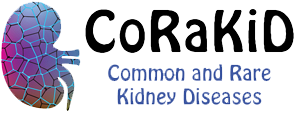Gingival proteomics reveals the role of TGF beta and YAP/TAZ signaling in Raine syndrome fibrosis
Résumé
Raine syndrome (RNS) is a rare autosomal recessive osteosclerotic dysplasia. RNS is caused by loss-of-function disease-causative variants of the FAM20C gene that encodes a kinase that phosphorylates most of the secreted proteins found in the body fluids and extracellular matrix. The most common RNS clinical features are generalized osteosclerosis, facial dysmorphism, intracerebral calcifications and respiratory defects. In non-lethal RNS forms, oral traits include a well-studied hypoplastic amelogenesis imperfecta (AI) and a much less characterized gingival phenotype. We used immunomorphological, biochemical, and siRNA approaches to analyze gingival tissues and primary cultures of gingival fibroblasts of two unrelated, previously reported RNS patients. We showed that fibrosis, pathological gingival calcifications and increased expression of various profibrotic and pro-osteogenic proteins such as POSTN, SPARC and VIM were common findings. Proteomic analysis of differentially expressed proteins demonstrated that proteins involved in extracellular matrix (ECM) regulation and related to the TGFbeta/SMAD signaling pathway were increased. Functional analyses confirmed the upregulation of TGF beta/SMAD signaling and subsequently uncovered the involvement of two closely related transcription cofactors important in fibrogenesis, Yes-associated protein (YAP) and transcriptional coactivator with PDZ-binding motif (TAZ). Knocking down of FAM20C confirmed the TGFbeta-YAP/TAZ interplay indicating that a profibrotic loop enabled gingival fibrosis in RNS patients. In summary, our in vivo and in vitro data provide a detailed description of the RNS gingival phenotype. They show that gingival fibrosis and calcifications are associated with, and most likely caused by excessed ECM production and disorganization. They furthermore uncover the contribution of increased TGFbeta−YAP/TAZ signaling in the pathogenesis of the gingival fibrosis.
Fichier principal
 MS-Scientific-Reports-Costa-et-al-revised280224final.pdf (2.26 Mo)
Télécharger le fichier
MS-Scientific-Reports-Costa-et-al-revised280224final.pdf (2.26 Mo)
Télécharger le fichier
| Origine | Fichiers produits par l'(les) auteur(s) |
|---|
